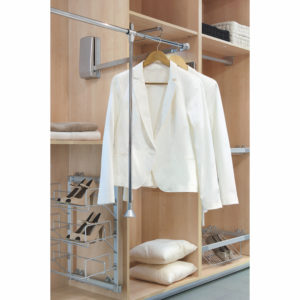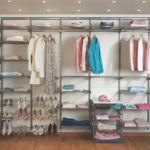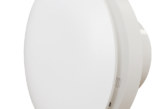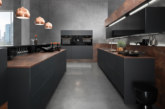David Saxby, Senior Category Manager at IronmongeryDirect, explains more about the role and benefits of using sliding and pocket door systems in future housing design.
With more Britons working from home than ever before, developers are now looking for ways to create flexible indoor spaces which facilitate hybrid living. Adopting modern alternatives to traditional door hardware can help achieve this ambition by enabling the creation of distinct zones, whilst not making rooms feel closed off.
New research suggests that one in five of us now works from home, with this shift in working habits looking set to continue. The lockdown measures across the country have forced the population to reassess their living space, not only to accommodate home working, but also the need for private and quiet areas, space to exercise or to home school. As such, there’s an increasing desire from homebuyers to seek out house designs that utilise every area of the home in the most efficient way, to save space and to zone different areas for multi-purpose living. Fortunately, sliding and pocket doors provide an ideal solution to help create flexible indoor living as well as maximise floor space.
 In recent years, there’s been a significant uptick in the number of sliding and pocket door solutions on the market, with alternatives to accommodate the ten standard British door sizes. As well as helping to accentuate in-home floor space, sliding and pocket door systems can be used to create flexible environments, which can be separated or joined at an instance.
In recent years, there’s been a significant uptick in the number of sliding and pocket door solutions on the market, with alternatives to accommodate the ten standard British door sizes. As well as helping to accentuate in-home floor space, sliding and pocket door systems can be used to create flexible environments, which can be separated or joined at an instance.
This is particularly pertinent now that the home plays an even greater role for individuals. The design and layout of the home now needs to accommodate new ways of living that offers multiple uses throughout the day. A sliding or pocket door adapts the interior space by connecting rooms for a larger, open plan area, whilst also affording the option to zone spaces for individual needs when required. For example, a home office can be partitioned away at weekends or after working hours, and a messy play area can be hidden from sight after the children have gone to bed. As such, both door systems are popular when planning both open-plan and broken-plan living designs.
Determining which system is suitable for a property depends on the walls and space available. Although both sliding and pocket door systems operate by gliding along a horizontal track, sliding doors run parallel to the wall remaining visible, whereas pocket doors require a cavity in the adjacent wall to slide into when the door is opened so it’s hidden from view. At IronmongeryDirect, we’re able to offer leading solutions, such as the Klug Ultra Pocket Door Kit and the Eclisse Single Pocket Door Kit, which help developers to maximise space, whilst also providing exceptional quality, strength and durability. To really accentuate the feeling of space, look for systems with recessed handles, which combine minimalistic design with excellent functionality.
It is also important to consider the impact that different track systems have on the product’s performance. When poorly installed, sliding track systems can become loud and will begin to perform ineffectively. Similarly, low-quality sliding and pocket door systems can begin to deteriorate after a few weeks of use. To this end, it’s essential to look for a high-quality system when making a specification that includes acoustic door features to help ensure high sound-proof performance.
Sliding and pocket doors can also be used to create visual impact. In fact, thanks to their retractable nature, they are a great way of adding colour to an interior, changing the feel of a room in an instant, or to use colour as a way of zoning different areas. Developers can create fun, high-performing and visually exciting indoor environments that inject new colour into the space.
With hybrid living now the new normal, leading space-saving solutions, such as sliding and pocket door systems are more popular than ever. These neat and sleek solutions offer a huge upgrade on traditional inward-opening hinged doors, particularly on homes where space is restricted. What’s more, they provide an effective way to break up spaces and create designated areas for different activity within a home at any point during the day.









